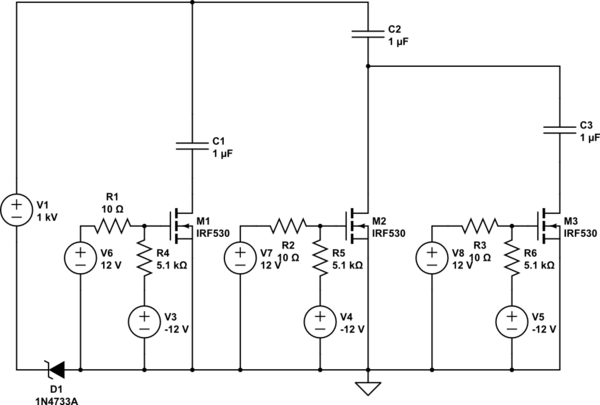I have a circuit with IGBTs which charges and discharges two different capacitor lines as a function of the voltage. i.e. when a voltage is detected below 160V, Q1 charges C1 and when a voltage over 160V and below 500V is detected, Q2 charges C2, and all voltages over 500V and up to 1000V are charged with Q3 and C2 and C3 in series.
After charging, the capacitors are discharged by R1 and R3 depending on which circuit was used.
All IGBTs are driven with a UCC21520 driver by means of a microcontroller. Isolated power supplies are obtained from an NMK1515SC DCDC converter with 3000Vrms isolation during 1 second.

simulate this circuit – Schematic created using CircuitLab
The problem is that charging at high voltages (over 800V typically,) Q1 is failing, going into short-circuit and therefore C1 gets exposed to 800V and ends up exploding.
Sometimes it also happens in Q2, although less frequently. I suspect various things could be happening but not 100% in any of them and not even sure if it could be some other thing:
- When Q3 is closed V_CE of Q1 changes from 850 to 0V and then slowly back to 850V with the charging of C2 and C3. This without Q1 beign activated and could be the cause of the failue of Q1.
- Right now not using a resistor betwenn the IGBT driver and the IGBT gate which could cause voltage overshoot and cause the IGBT to fail. But this should occur on the IGBT beign triggered and not another one.
- Maybe IGBT model is not the most appropiate.
Any other ideas would be very much appreciated.
IGBT driver circuit:




